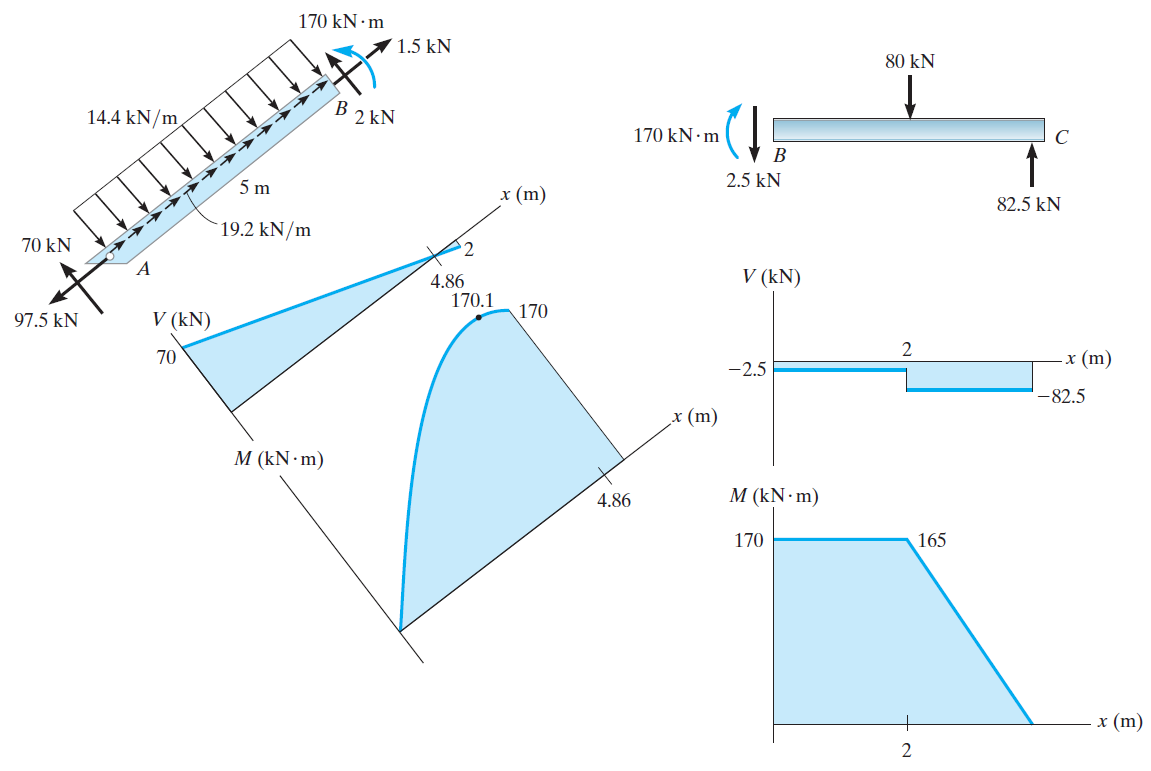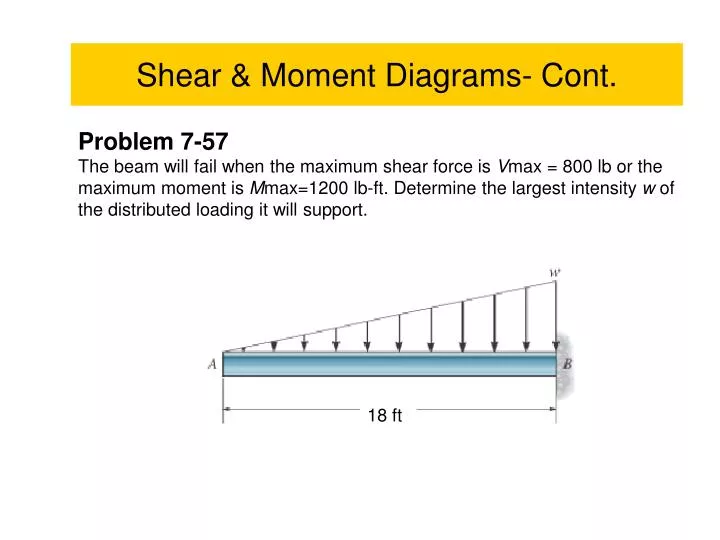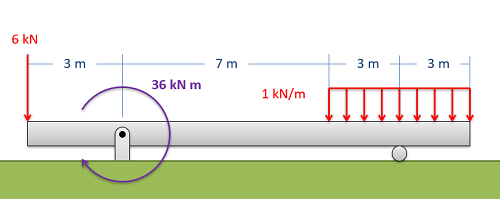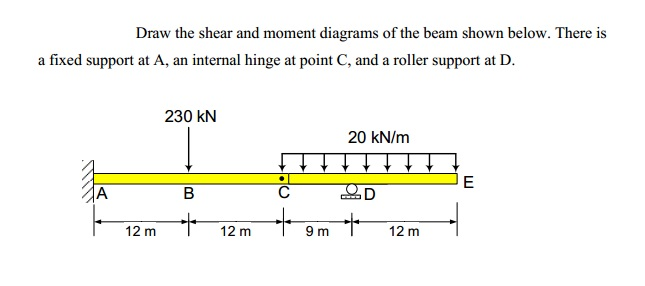

We now have all the information needed to determine the shear force and bending moment diagrams.Īs mentioned in an earlier part of this article, if we make an imaginary cut through the beam at any location, the internal forces and moments acting on the cut cross-section must balance the external forces and moments.
#SIMPLE SHEAR AND MOMENT DIAGRAMS FREE#
These three reaction forces and the applied distributed and concentrated forces are shown on the free body diagram.ĭetermine the internal shear forces and bending moments at every location along the beam At the roller support there is just a vertical reaction force. The beam can rotate at this support, so there is no reaction moment, but displacements in the vertical and horizontal directions are prevented, so there will be horizontal and vertical reaction forces. Example of a beam configuration (above) and the corresponding free body diagram (below)Ĭonsider the pinned support in the beam configuration shown above. Figuring out the free body diagram is an important first step in determining the shear force and bending moment diagrams. At a pinned support for example a beam will be experiencing horizontal and vertical reaction forces, because horizontal and vertical displacements are restrained, but there will be no reaction moment because the beam can rotate at the pinned support.Ī free body diagram is a simple sketch that shows all of the external loads acting on a beam and any reaction forces from supports. When a certain degree of freedom (rotation or translation) is restrained at a support, there will be a corresponding reaction force or reaction moment at that location. They are often used as a starting point for performing more detailed analysis, which might include calculating stresses in beams or determining how beams will deflect. By showing how the shear force and bending moment vary along the length of a beam, they allow the loading on the beam to be quantified. Shear force and bending moment diagrams are used to analyse and design beams. Why Are Shear Force and Bending Moment Diagrams Useful? The effect of the internal forces on the beam cross-section can be represented by two resultants – a shear force and a bending moment This means that the internal forces acting on the cross-section of the beam can be represented by one resultant force, called a shear force, that is the resultant of the internal shear forces, and by one resultant moment, called a bending moment, that is the resultant of the internal normal forces. These forces cancel each other out so they don’t produce a net force perpendicular to the beam cross-section, but they do produce a moment. Normal internal forces are either tensile or compressive The bottom of the beam will get longer, and so the normal forces acting at the bottom of the beam will be tensile. If the beam is sagging the top of the beam will get shorter, and so the normal forces acting at the top will be compressive.

The normal stresses will be tensile on one side of the cross-section, and compressive on the other.

No matter where the imaginary cut is made along the length of the beam, the effect of the internal forces will always balance the effect of the external forces. The internal forces develop in such a way as to maintain equilibrium.

Shear (left) and normal (right) internal forces


 0 kommentar(er)
0 kommentar(er)
